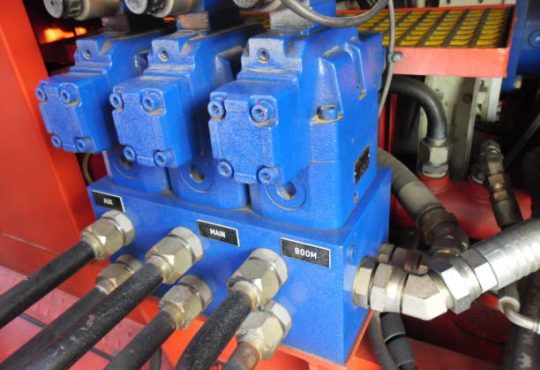
How to Tell If a Vehicle Has Active Fuel Management
In today’s automotive world, fuel efficiency is a hot topic. With rising fuel prices and growing environmental concerns, car manufacturers are continuously developing technologies to make vehicles more fuel-efficient. One such technology is Active Fuel Management (AFM), also known as cylinder deactivation. AFM allows an engine to shut down half of its cylinders under certain driving conditions to save fuel. But how can you tell if your vehicle has Active Fuel Management? Here’s a detailed guide to help you determine if your car is equipped with this fuel-saving feature.
Understanding Active Fuel Management
Before diving into how to identify AFM in your vehicle, it’s crucial to understand what it is and how it works. Active Fuel Management is a technology developed by General Motors (GM) and used in various vehicles to improve fuel efficiency. It enables an engine to operate on fewer cylinders when full power is not needed. For instance, a V8 engine can run as a V4 engine under light load conditions, reducing fuel consumption and emissions.
Check the Owner’s Manual
The simplest way to determine if your vehicle has Active Fuel Management is to consult the owner’s manual. The manual provides detailed information about the vehicle’s features, including engine specifications. Look for terms like “Active Fuel Management,” “Cylinder Deactivation,” or “Variable Displacement.” If these terms are mentioned, your vehicle likely has AFM.
Look for the Badge
Many manufacturers include badges on their vehicles to indicate special features. For GM vehicles, you might find an “AFM” or “Active Fuel Management” badge on the engine cover, the side of the vehicle, or the rear. These badges can be a quick visual indicator of whether your vehicle is equipped with AFM technology.
Vehicle Information Sticker
Another place to check is the vehicle information sticker, usually located on the driver’s side door jamb or under the hood. This sticker includes various details about your vehicle, such as the engine type and other technical specifications. Look for engine codes or descriptions that mention AFM or cylinder deactivation.
Onboard Diagnostics (OBD-II) Scanner
For a more technical approach, you can use an OBD-II scanner to check if your vehicle has Active Fuel Management. An OBD-II scanner can read the vehicle’s computer system and display information about various features and systems. Plug the scanner into the OBD-II port, usually located under the dashboard, and look for codes or data related to AFM. Some scanners may even provide specific details about when the system activates.
Fuel Economy Improvements
Vehicles with Active Fuel Management often show noticeable improvements in fuel economy. If you experience significantly better fuel mileage under light driving conditions compared to when you’re driving more aggressively, your vehicle might have AFM. Pay attention to your fuel consumption patterns and see if there’s a distinct difference in different driving scenarios.
Consult a Mechanic or Dealership
If you’re still unsure whether your vehicle has Active Fuel Management, consulting a professional mechanic or your dealership can provide a definitive answer. Mechanics have the expertise and tools to identify engine features accurately. They can inspect your vehicle and confirm if AFM is present and functioning correctly.
List of Vehicles with Active Fuel Management
Certain makes and models are more likely to have Active Fuel Management, especially those manufactured by General Motors. Here’s a list of some common vehicles known to feature AFM:
- Chevrolet Silverado
- GMC Sierra
- Chevrolet Tahoe
- Chevrolet Suburban
- GMC Yukon
- Cadillac Escalade
- Chevrolet Camaro
This list is not exhaustive, but if you own one of these vehicles, there’s a good chance it has AFM.
Benefits of Active Fuel Management
Understanding the benefits of AFM can also help you appreciate its presence in your vehicle. The primary advantage is improved fuel economy, which translates to cost savings and reduced environmental impact. By shutting down cylinders when they’re not needed, AFM helps lower emissions and makes your vehicle more efficient. Additionally, AFM operates seamlessly, so you won’t notice a difference in performance during everyday driving.
Potential Drawbacks
While AFM has its benefits, there are also potential drawbacks to consider. Some drivers report increased engine wear and tear due to the constant activation and deactivation of cylinders. In some cases, AFM can lead to issues such as lifter failure or increased oil consumption. It’s essential to maintain your vehicle properly and stay informed about any signs of trouble.
Conclusion
Identifying if your vehicle has Active Fuel Management involves checking various sources of information, from the owner’s manual and badges to vehicle stickers and diagnostic tools. Understanding AFM and its benefits can help you make the most of this fuel-saving technology. Whether you’re looking to save on fuel costs or reduce your environmental footprint, knowing about AFM can give you an edge in optimizing your vehicle’s performance.
Next time you’re behind the wheel, take a moment to appreciate the technology working silently under the hood, helping you get the most out of every drop of fuel.



